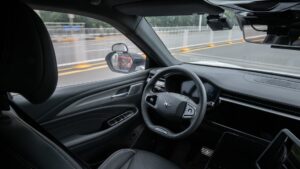Are Driverless Ride-Hailing Cars Stealing People’s Rice Bowls?
China’s journey towards developing robotaxis has been making waves lately, with more than 70% of Baidu Apollo Go robotaxi rides in Wuhan being fully driverless as of April. The company expects that all rides will be completely autonomous in the near future. This development has sparked interest among consumers but also raised concerns among taxi drivers about potential job losses due to increased competition.
Just like GM’s Cruise and Alphabet’s Waymo in the US, local Chinese governments from Beijing to Guangzhou have approved domestic players to operate robotaxi rides for the public. This shift towards autonomous driving is gaining momentum in China, with videos of fully autonomous driving taxi experiences trending on social media platforms like Douyin and Weibo.
Baidu’s robotaxi unit, Apollo Go, has become popular in Wuhan, where the company started operating fully driverless vehicles in certain districts 24/7 since March. With plans to increase the fleet from 500 to 1,000 robotaxis by the end of the year, Baidu is now one of the largest robotaxi operators in China.
As the attention on robotaxis grows, major Chinese cities are stepping up their support, while smaller cities have started restricting ride-hailing apps in recent months. The surge in new companies and ride-hailing drivers prompted some local governments to limit the industry’s expansion to avoid oversaturation.
China had over 7 million registered ride-hailing drivers as of May, double the number reported in July 2021. In comparison, the US had nearly 400,000 taxi and ride-hailing drivers in 2022. The number of ride-hailing companies in China also increased from 241 in 2021 to 351 as of May this year.
To support the growth of robotaxis, Chinese ministries released a plan in January to promote cloud-connected cars, with tests of at least 200 low-speed unmanned vehicles in each pilot region. Beijing and other cities are already allowing robotaxi operators to test cars in suburban areas, with plans to expand the service to more regions.
Baidu’s CEO, Robin Li, announced that more than 70% of Apollo Go robotaxi rides in April were fully driverless, with a prediction of reaching 100% autonomy in the near future. This progression towards autonomous driving has sparked conversations about the future of transportation and the impact on traditional drivers in China.
At Extreme Investor Network, we provide in-depth insights into the latest developments in finance and technology, including the growing trend of robotaxis in China. Stay ahead of the curve by joining our community of forward-thinking investors and innovators. Explore our platform to access exclusive content and analysis on emerging trends in the financial world.

